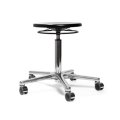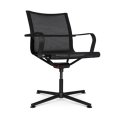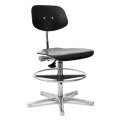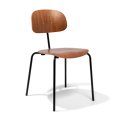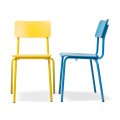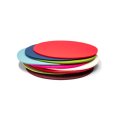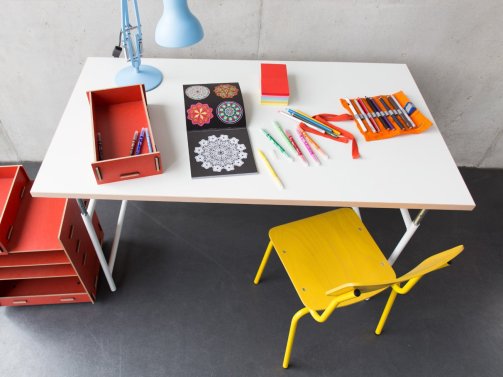Children's chairs - small seating furniture with a big effect
Children's chairs are - of course - specially designed for children: The chair legs are shorter, the seat and back surfaces smaller. But what else distinguishes the individual designs? How high should a children's chair be so that your offspring can sit on it as healthily as possible? And what do you have to consider when buying a desk chair for children?
When can the offspring sit on a children's chair?
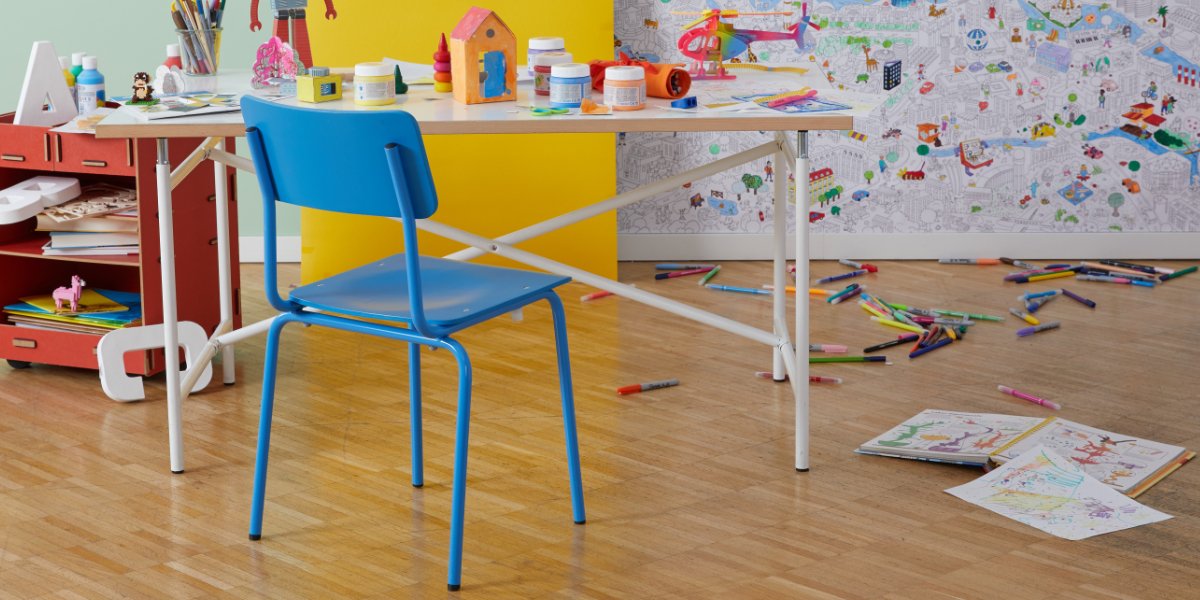
There is no question that it is a milestone in the development of the youngest children when they are able to sit down independently and without help. From this point on, and really only then, they can also sit for as short a time as possible in a chair adapted to their needs and stage of development. In most cases, this will be a high chair placed at the dining table, which offers the minis sufficient protection and support.
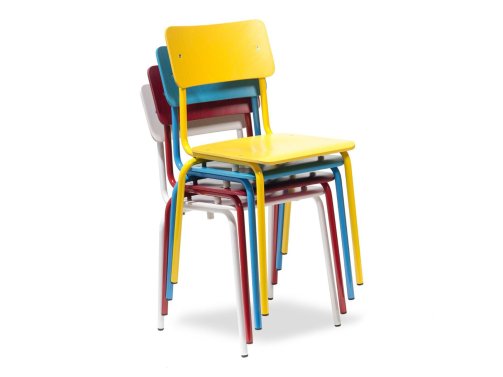
From high chair to children's chair
Classic children's chairs only become interesting from the typical painting, modelling and crafting age. With a size-matched children's table, they form the ideal basis for creative hours and imaginative role-play. This is where the dolls and cuddly toys of the children's room gather for numerous tea parties before the next step comes with the start of school.
Now children's chairs like the colourful Comeback 041 and the 118 make their grand entrance in front of the desk. The stable, tip-proof and robust models not only invite the kids to study, but are also happy to be included when castles and dens are being built in the children's room. So it's worth having several of the cool retro models in stock. They are easy to stack and can be quickly stowed away to save space when needed. If the child prefers classic office chairs, it is worth considering investing in a children's swivel chair such as the Modulor children's chair with mesh backrest or the Modulor school swivel chair. Both models are equipped with practical castors and grow with the child, just like our height-adjustable children's desks E2 and M2.
No matter which children's chairs the offspring sit on over the years, one rule can be stated for all models: Every child's chair should be optimally adapted to the child, its size and development in order to lay the foundation for healthy sitting and prevent incorrect posture.
Children's chairs: small but mighty
It is not only at school that children spend most of the day sitting. There are also numerous hours in the afternoon and at the weekend.
For this reason, it is advisable to ask the following questions before deciding on a particular children's or kids' desk chair:
1. Does the chair allow your child to sit in the correct position?
2. Does the chair allow your child to sit dynamically?
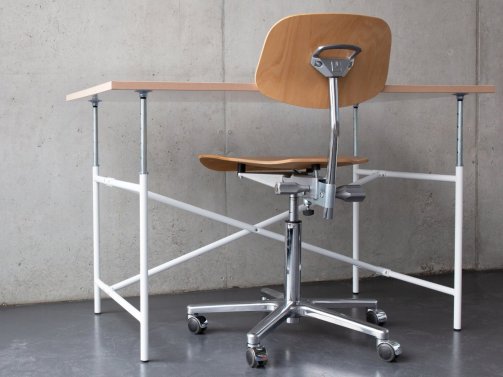
The correct sitting posture - ergonomic
For the sake of a healthy development of the back and spine, a correct sitting posture is essential. The child sits correctly on its high chair when the upper and lower legs form about a 90° angle to each other. The thighs rest comfortably, the back of the knees are not directly on the edge of the seat and the feet are completely on the floor.
The angle between the upper and lower body is slightly greater than 90°. The back is upright, the shoulders are relaxed and the forearms rest flat on the table.
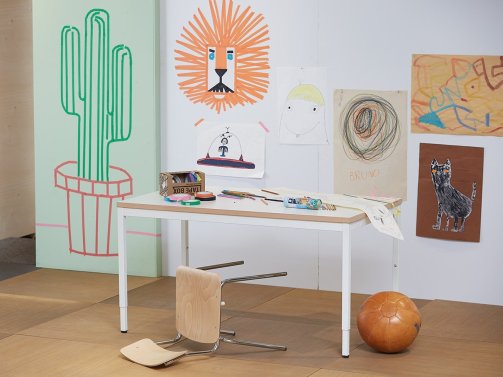
Dynamic sitting
Children must have the opportunity to follow their natural urge to move - even on a chair. After all, sufficient movement is important for physical and mental development and prevents back pain later on. Kids should be able to lean forward, backward and to the sides on their high chair. The more often they change the sitting position on the high chair, the more different muscle groups they use. This prevents tension, improves circulation and has a positive effect on concentration and performance. The joy of movement of active minis, which is often criticised at school, is therefore quite sensible.
Practical tip: Even if the homework is not yet finished and not all the vocabulary has been memorised - encourage your child to interrupt the sitting phases again and again and to move around. This will keep them receptive and able to concentrate.
How high should a children's chair be?
The correct seat height of a child's chair naturally depends on the height of the child who is to sit on it. The following table can give you a rough guide:
Since the children's chair and table must always be considered together in order to be able to sit ergonomically, the respective table height is also listed.
| Size specification according to DIN EN 1729-1 | Height of the child in cm | Seat height in cm | Table height in cm |
| Size 0 | 80-95 | 21 | 40 |
| Size 1 | 93-116 | 26 | 46 |
| Size 2 | 108-121 | 31 | 53 |
| Size 3 | 119-142 | 35 | 59 |
| Size 4 | 133-159 | 38 | 64 |
| Size 5 | 146-176,5 | 43 | 71 |
| Size 6 | 159-188 | 46 | 71 |
| Size 7 | 174-207 | 51 | 82 |
Attention: The body height is a good guide to determine the required seat height, but also take into account the individual proportions of your offspring.
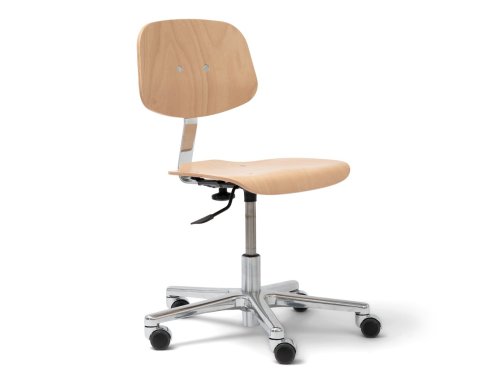
Children's chair for pupils aka desk chair for children
When children start school or move into their own desk, the purchase of a children's swivel chair such as the Modulor children's chair with mesh backrest also becomes interesting. Like office chairs for adults, the models should promote active sitting and be individually adjustable in height and depth. When choosing a chair, make sure that you can adjust both the seat and the backrest to suit the child.
A child's desk chair without castors may offer extra safety and protect the floor covering. Variants with castors, however, meet the child's need for movement and provide mobility. A children's chair with armrests is more suitable for older kids. The side restraints can encourage younger children in particular to climb and thus increase the risk of accidents. In addition, swivel chairs without armrests offer more freedom of movement.
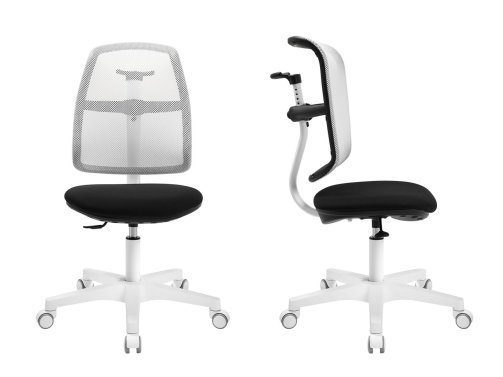
The Modulor models
Models such as our Modulor children's chair with mesh backrest or the Modulor swivel chair for schoolchildren are in no way inferior to an office chair for adults:
The five-armed foot crosses with castors ensure a secure stand. The seat is height-adjustable, the backrest can also be varied in height and - as not all backs are shaped the same - rotated by 180°. The chairs grow with your child. No matter whether your child prefers the upholstered version or the model made of beech plywood: Both swivel chairs for children can cope with numerous growth spurts and score points with a practical modular system. If necessary, you can simply replace the individual components. So nothing stands in the way of many years of use.
Important: Check from time to time whether the children's desk chair is still correctly adjusted.
Good to know: While you can sit at our height-adjustable children's desks without further ado, it is not quite so easy with a children's chair. Even if the seat height and your body size are in perfect harmony, it is important that you check whether the model has the appropriate load capacity. If in doubt, you are better off with our office chairs or stacking chairs for adults.
Classic or colourful - children's chairs for every taste
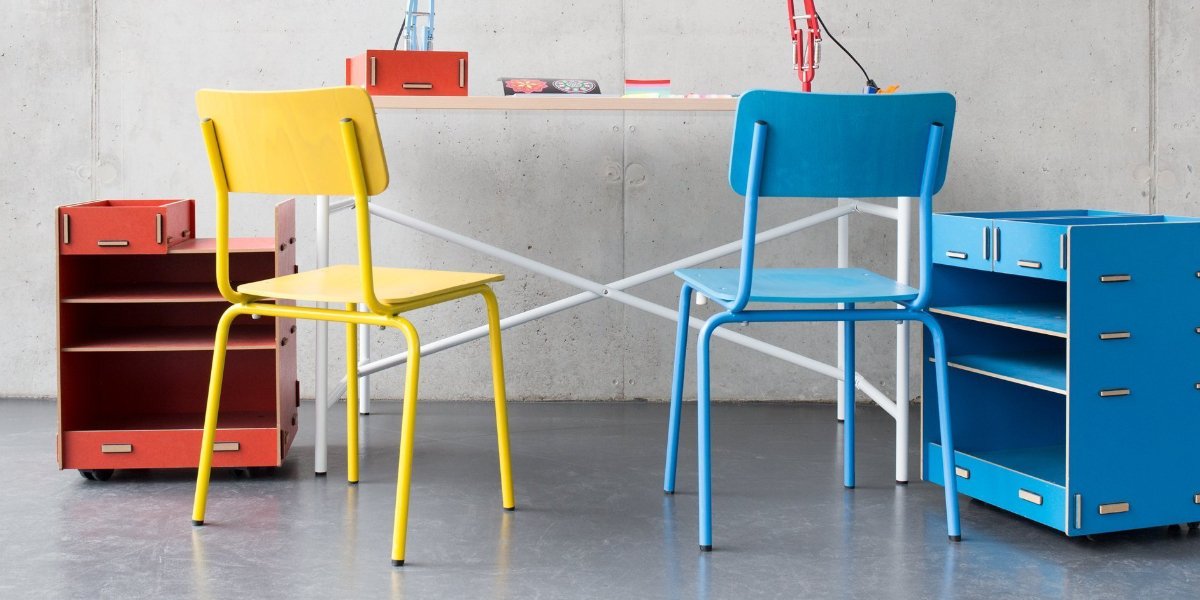
Adults often have a long service life in mind when buying a child's chair. The minis set other priorities. If arguments in favour of timeless designs and classic colours only earn a weary shrug of the shoulders, compromises need to be found.
Perhaps it is enough to add separate covers or cushions with child-friendly motifs to a children's chair. Maybe a classic like the Comeback 041 will convince the grown-ups with its clear lines, the little ones with a fresh light blue or sunny yellow.
In any case, it is more than practical to choose a children's chair that is easy to clean. If something goes wrong while painting, doing handicrafts or sweetening homework with chocolate, everyone can stay relaxed. Separate seat cushions have a clear advantage here. Especially for younger age groups, however, it is important to make sure that the cushions can be fastened well so that the kids don't slip off the chair together with their pad. If an extra portion of breathability is required, children's desk chairs with mesh backrests such as the Modulor children's chair are in the lead.
Tip: When choosing a child's chair, pay attention to the design's own weight. Heavy models can sometimes offer more robust features and greater resistance to tipping over. Lighter models, on the other hand, can be handled independently by younger children.
